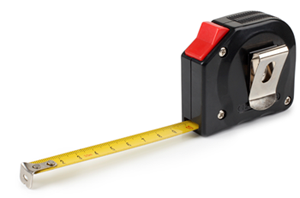 In today’s blog, we’re looking at how to do M&V using the “Whole Facility” Method (Option C) from the IPMVP protocol maintained by EVO-World.
In today’s blog, we’re looking at how to do M&V using the “Whole Facility” Method (Option C) from the IPMVP protocol maintained by EVO-World.
Since most building energy management projects can be assessed effectively with Option C, let’s look at how this methodology works.
Step 1: Establish a Baseline
In Option C, we must first establish a baseline year. Typically this period is the twelve months immediately prior to the implementation of the energy management initiative. A good baseline will have complete utility billing data for all twelve months. Each billing period should be defined (start/end dates) and include (at minimum) use and cost for tracked commodities.
Step 2: Adjust the Baseline to Today’s Conditions
The next step is to adjust the baseline year to today’s conditions, accounting for factors outside the parameters of the energy management program. For example, if the weather was hotter in the current year, we would need to determine the extent of the weather variable in terms of energy use and then adjust the baseline use to match the current conditions.
This is a matter of fairness. If the summer was hotter in the current year, and air conditioners had to run longer and harder to maintain comfortable temperatures in managed buildings, it would be unfair to fault the energy management initiative. Other “fairness” adjustments needs to be made for commodity costs to account for any rate variations.
Another important adjustment, especially for monthly reporting, is billing period length. If last year’s billing period was 28 days and this year’s billing period was 32, a comparison would be meaningless without some sort of accounting for the very significant difference (about 12%) between the two time periods represented by the bills.
If the square footage of the facility had changed from the baseline period, then that adjustment would also need be made. Eventually, when all known variables have been accounted for, we would arrive at an energy cost value for the Baseline year Adjusted To Current Conditions, which is referred to as the BATCC in the EnergyCAP energy management software.
Step 3: Compare the BATCC to the current utility bills
The final step is to compare the actual utility bill cost with the BATCC cost. This compares what was actually spent with what would have been spent in a similar baseline year.
Consider this example involving a utility rate increase variable:
In the base year, a facility consumes 10,000 kilowatt hours of electricity. At that time, the cost of the electric commodity was $0.10/kWh, so the cost was $1,000.
Today, following the implementation of an energy initiative, consumption was reduced to 8,000 kWh at a price of $0.15/kWh. Today’s cost: $1,200.
Now the company financial officer might see the bill and complain about the increased cost (up $200 from the base year). But using the Option C methodology, we can demonstrate that BATCC cost would have been $1,500 (10,000 kWh x $0.15/kWh current commodity cost) without the energy management initiative. We can then subtract the actual cost of $1,200 from the BATCC cost to discover that our Cost Avoidance was $300.
{{cta(‘e0abeb56-77e8-4259-9164-15acb12754bd’)}}
 Best-in-class portfolio-level energy and utility bill data management and reporting.
Best-in-class portfolio-level energy and utility bill data management and reporting.
 Real-time energy and sustainability analytics for high-performance, net-zero buildings.
Real-time energy and sustainability analytics for high-performance, net-zero buildings.
 A holistic view of financial-grade scope 1, 2, and 3 carbon emissions data across your entire business.
A holistic view of financial-grade scope 1, 2, and 3 carbon emissions data across your entire business.
 Energy and sustainability benchmarking compliance software designed for utilities.
Energy and sustainability benchmarking compliance software designed for utilities.
 In today’s blog, we’re looking at how to do M&V using the “Whole Facility” Method (Option C) from the IPMVP protocol maintained by
In today’s blog, we’re looking at how to do M&V using the “Whole Facility” Method (Option C) from the IPMVP protocol maintained by 

